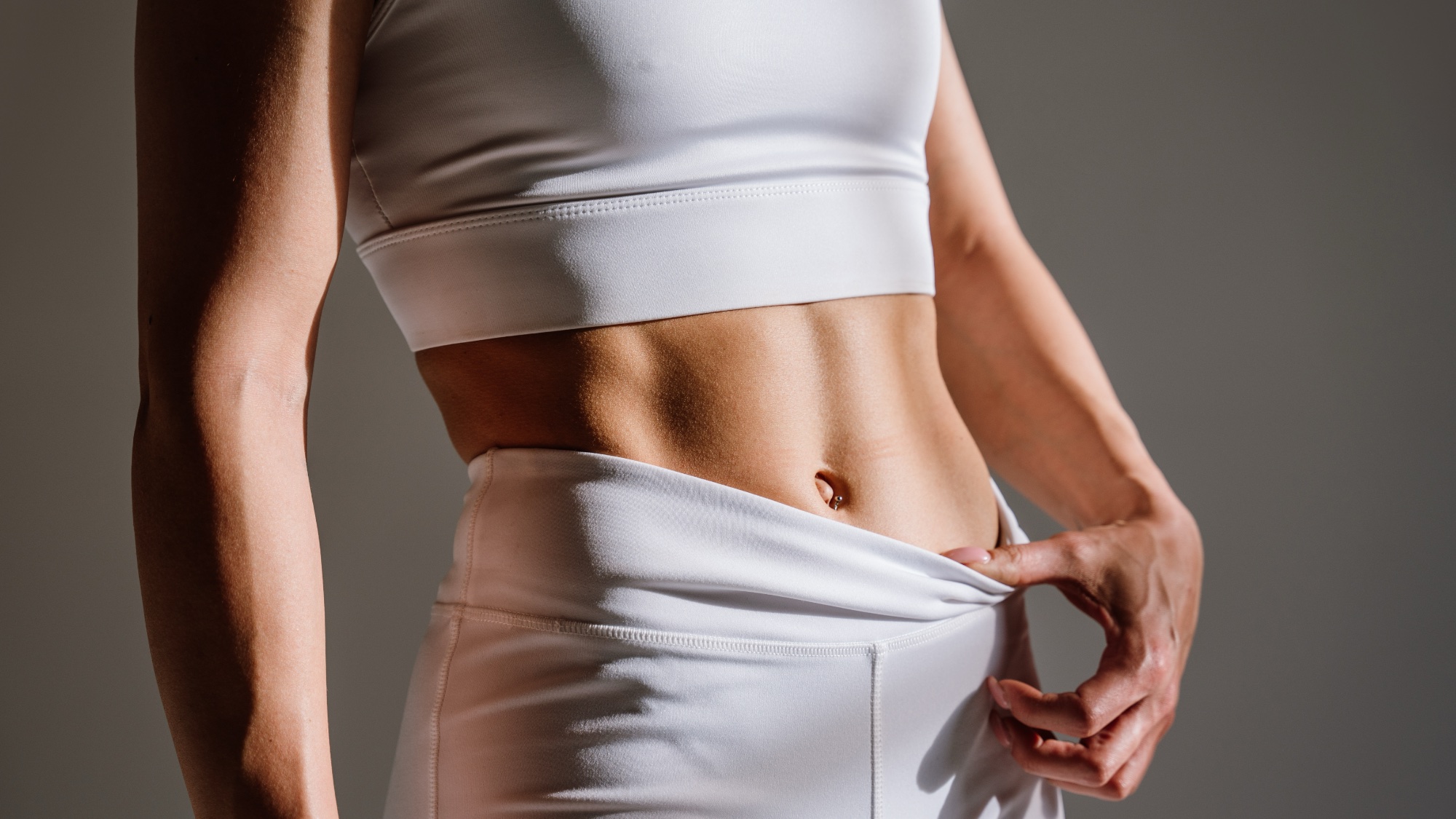Tom's Guide Verdict
The Epson Expression Photo XP-8800 offers plenty of photo printing features and very high print quality, using its six inks. Two paper trays plus an additional specialty paper slot offer flexibility—and fast performance across the board makes it suitable for everyday duties.
Pros
- +
Very high photo print quality
- +
Fast at printing color photos
- +
Prints and copies color graphics very quickly
- +
Color scanning is faster than average
- +
Black-and-white copying speed is above average
Cons
- -
Text printing is slightly slower than average
- -
Black-and-white scanning to PDF is slower than average
- -
Scans of very small text to PDF could be sharper
- -
Rear paper slot accommodates only one sheet at a time
Why you can trust Tom's Guide
The Epson Expression Photo XP-8800 ($300) is a multifunction printer aimed to please the photo enthusiast.
It uses six ink cartridges, using Claria HD (“high-definition”) dye-based inks, adding light magenta and light cyan to the standard offering of black, cyan, magenta and yellow. This Epson photo multifunction also scans and copies, and performed well in our tests, both in terms of speed and image quality.
Connectivity options include a USB port, wireless, and Wi-Fi Direct. Printing from a smart device is done with the Epson Smart Panel app for iOS and Android.
Does it have what it takes to hang with the best printers on the market? In this Epson Expression Photo XP-8800 printer review I'll walk you through what I think and why.
Design
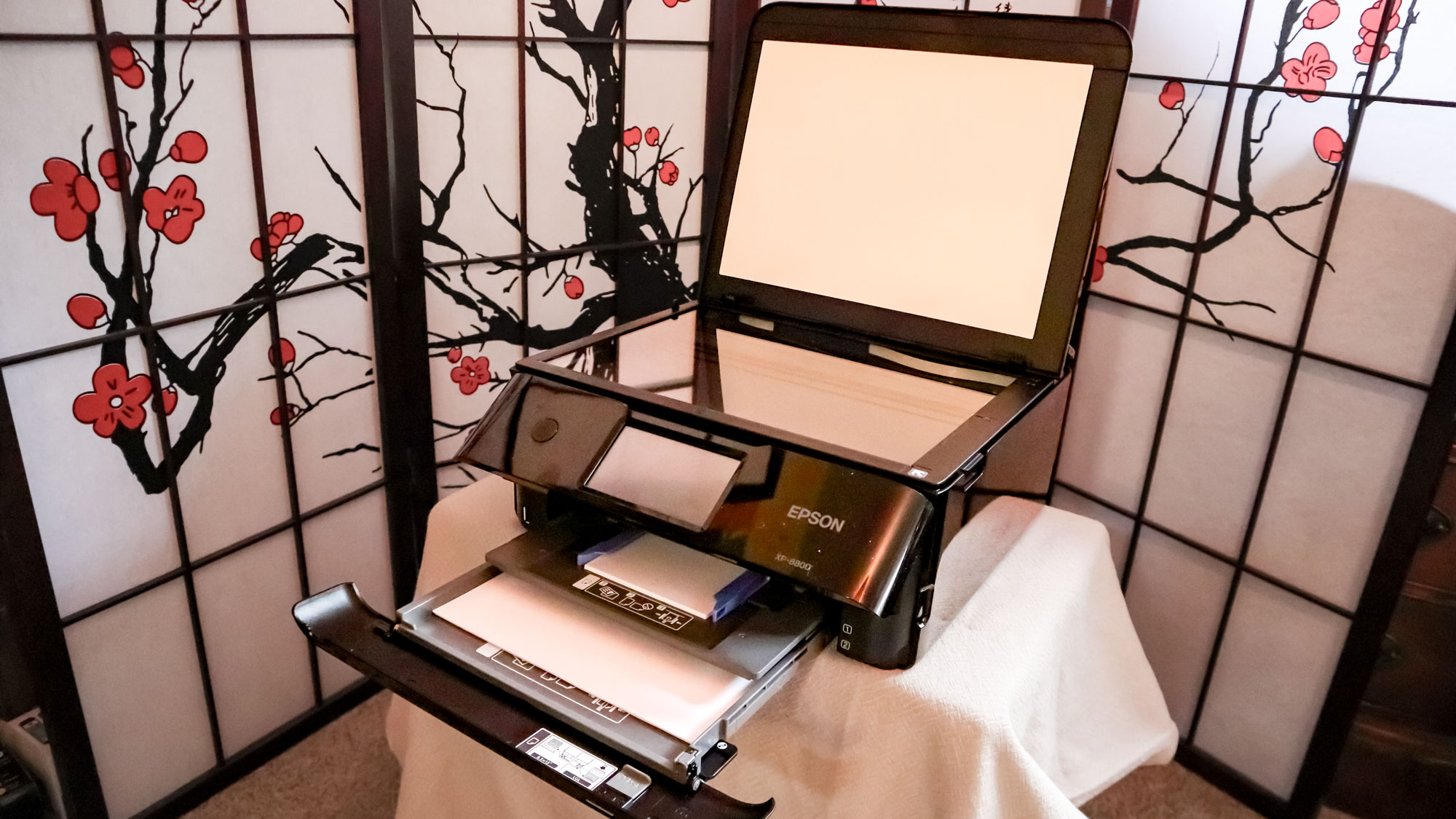
The XP-8800 has a large, 4.3-inch color touchscreen that works well for changing settings and selecting functions. The panel, including the power button, folds upward 90 degrees. The body is somewhat compact, measuring 13.7 x 20.7 x 7.2 inches. It is easy to move, weighing 14.6 pounds.
Beneath a lightweight lid atop the unit, there's a flatbed glass for scanning and copying one page at a time (there isn't an automatic document feeder). This Epson does not have a duplexer for making two-sided prints.
The XP-8800 offers three paper input trays, so you can keep multiple paper sizes and types at the ready. Behind a fold-down door, there are two paper input cassettes and the output tray. The bottom input tray holds up to 100 sheets of letter-size plain paper. You can, however, use photo papers in it as well, and load up to 20 sheets of glossy paper, as small as 4 x 6 inches. Photo paper as small as 3.5 x 5 inches can be loaded in the upper tray, which accommodates various sizes up to 5 x 7-inch and 4 x 7.1-inch (16:9 wide). A third paper slot is located on the back of the unit for specialty media; it must be fed one sheet at a time. It accommodates paper up to 8.5 x 47.2 inches.
If the output tray is retracted, it will extend automatically when you initiate a print job. Also, there is a CD/DVD tray for printing on coated discs. On the lower left of the front panel is an SD/MicroSD slot for printing directly from your camera's memory card. This slot sits behind the touchscreen panel if it is folded down against the body.
The Claria HD inks used by the XP-8800 are described by Epson as “lab-quality”. This is the company's line of photo enthusiast inks—a step above their general-purpose DuraBrite Ultra inks, and a notch below their professional UltraChrome ink line.
Print speed
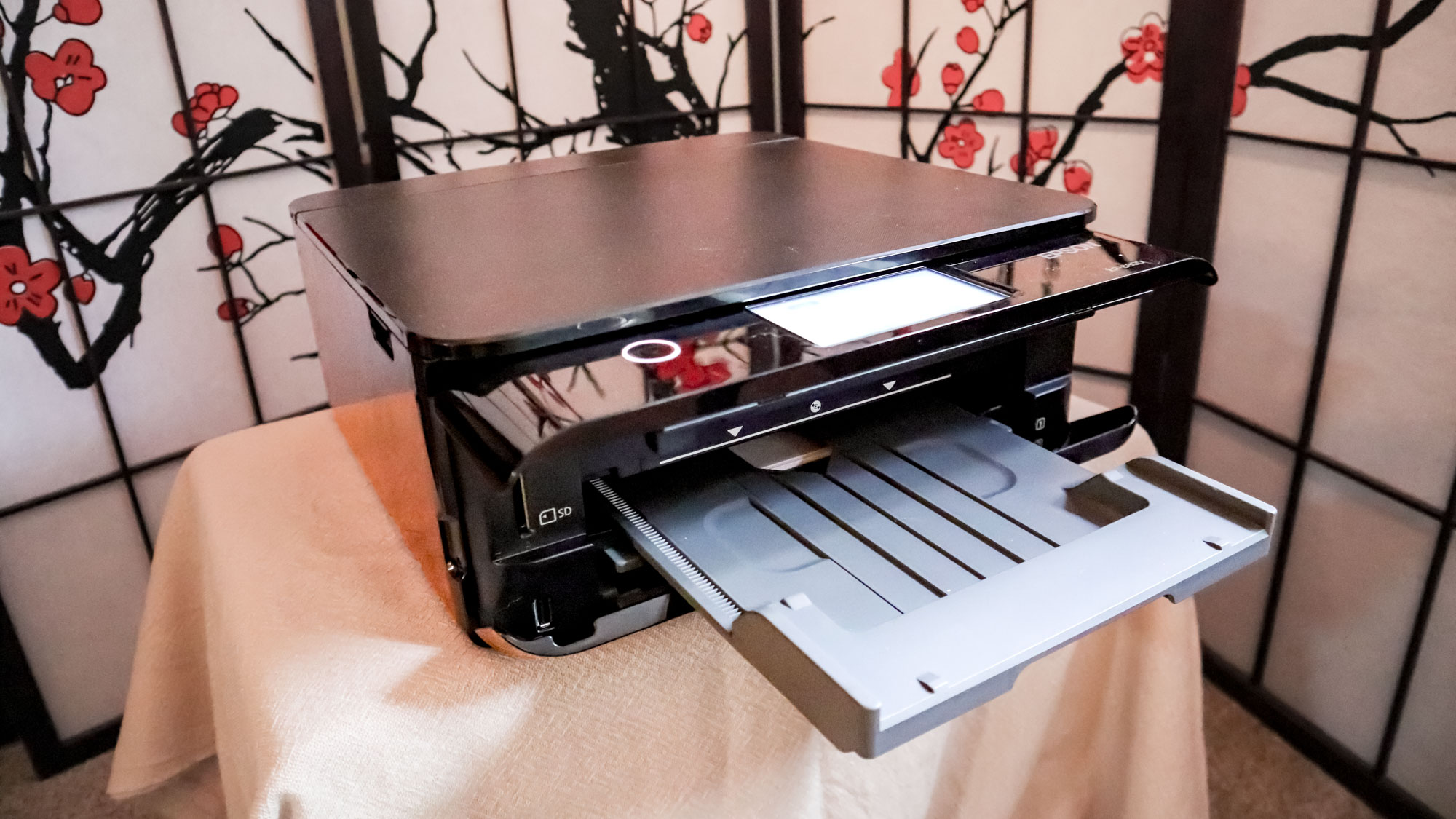
The Epson XP-8800 did not disappoint in our speed tests. It made a letter-size glossy photo print in just 1 minute and 26 seconds—almost three times faster than the category average of 4 minutes and 9 seconds. (This category excludes ink tank models and high-yield printers.)
The results were similarly impressive when printing on plain paper. The XP-8800 spat out our six-page document of mixed color graphics and text in just 1 minute and 8 seconds, or 5.3 pages per minute. The category average is half that, at 2.7 ppm.
For a photo printer, this Epson did not slough off when printing text documents either. Our five-page text document printed in 40.5 seconds, or 7.4 ppm, which was slightly below the average of 8.7 ppm.
The XP-8800 made 4 x 6-inch photo prints at high-quality setting in 1 minute and 27 seconds, on average. This was significantly faster than the average of 1 minute and 56 seconds.
Printing at standard quality was much quicker: An attractive 4 x 6-inch glossy arrived in just 40.5 seconds, on average. Printing at draft settings sped up print time to 24.5 seconds. (A discussion on print quality follows below.)
These print speed tests were done from a Windows 10 PC. Print times from an iPhone 7 running the iOS Epson Smart Panel app were very similar.
Copy and scan speed
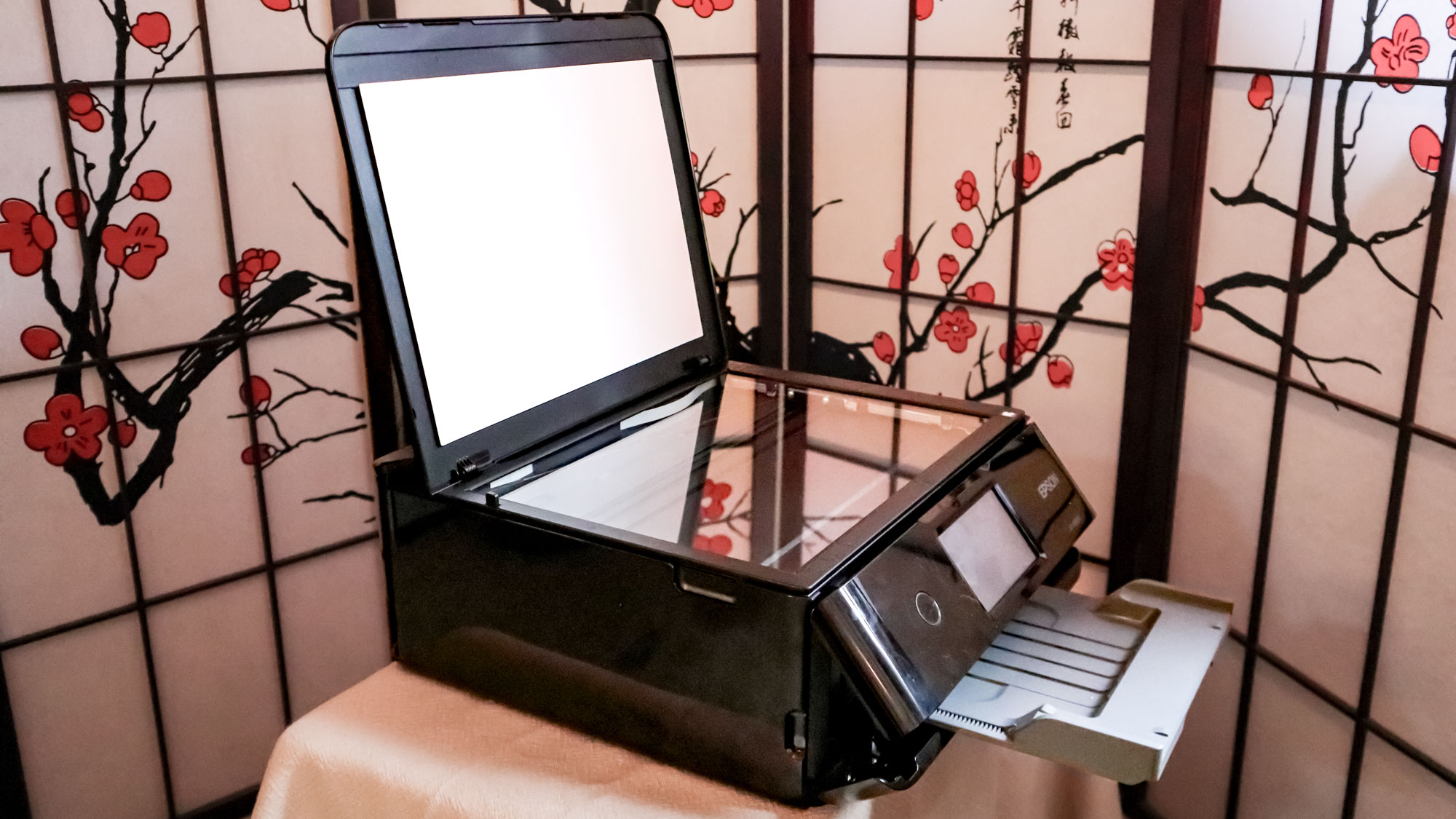
The XP-8800 made color copies significantly faster than the average. It made a copy of mixed text and color graphics in 17.1 seconds—much faster than the average of 28.2 seconds. Copying a page in black-and-white was roughly average, taking 14.4 seconds. The category average is 15.9 seconds.
Scanning in color at 600 dpi to JPEG format was also faster than the average. A color scan took 52.1 seconds, versus the average of 1 minute and 7 seconds. Scanning in black-and-white at 300 dpi to PDF format was slower than the average, taking 18.2 seconds per page on average. Competing models averaged a significantly faster 12 seconds on this test.
Print Quality
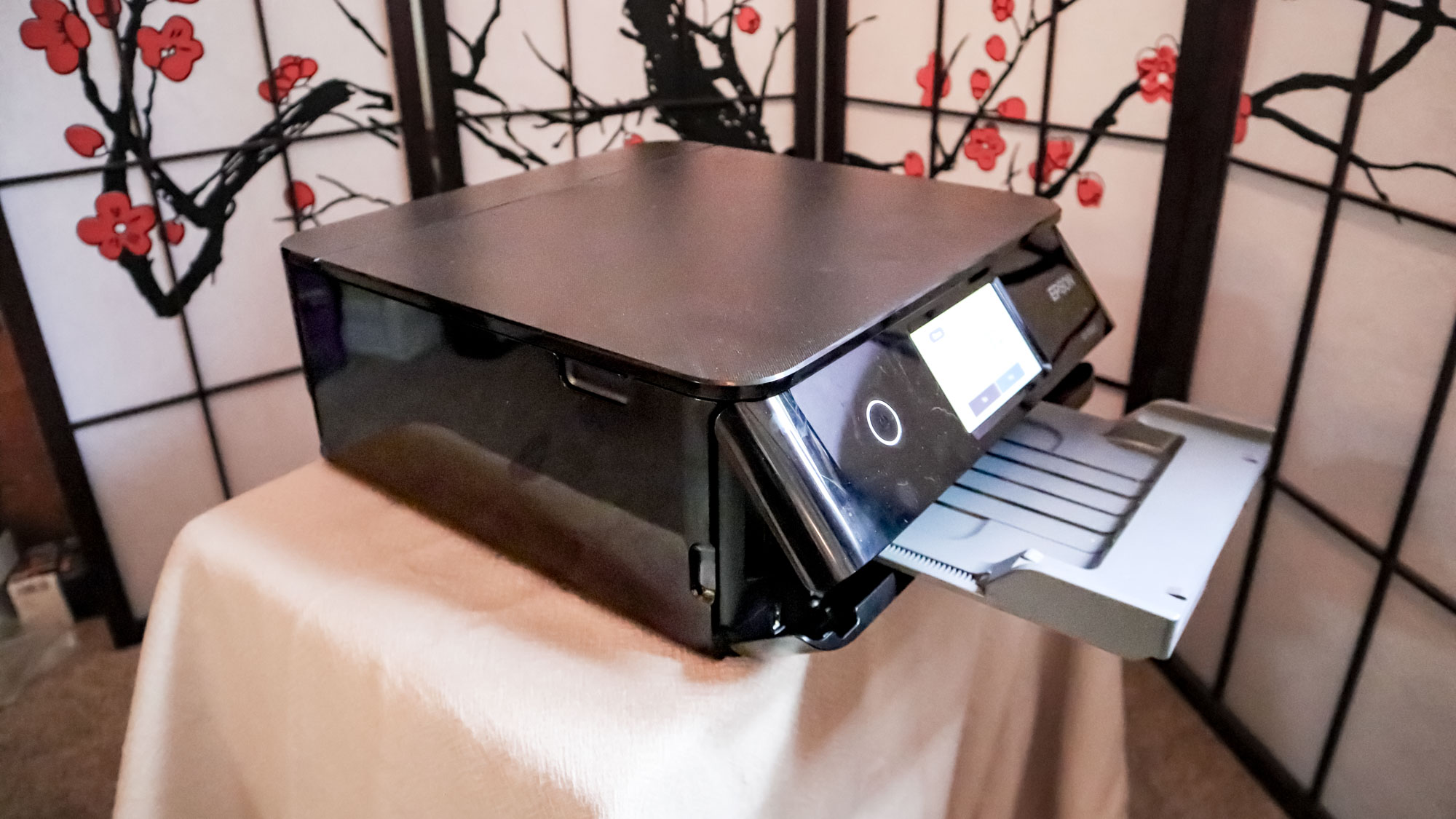
Text documents printed with sharp letterforms, and was quite dark. Letterforms were heavier than the sleeker text that a laser printer is capable of. Printing at the best quality setting resulted in slightly darker and at times subtly sharper edges. Seeing these differences required very close viewing.
Color graphics printed on plain paper with plenty of detail and accurate color. Text in PDF documents, however, looked somewhat lumpy around the edges and not as sharp as in prints from text documents. Prints made at the highest quality setting showed a very mild improvement on letterforms. Graphics, which were already very attractive, looked the same at the higher setting.
Photos printed on glossy paper looked fantastic, with well saturated colors and plenty of detail. Even when using the standard quality setting, a dramatic photo of a sunset printed with very rich, warm colors. Increasing the setting to high quality only added a subtle amount of saturation.
Compared to high-quality print settings, glossy photo prints made at lower settings showed very little drop-off in quality. The difference was so subtle, in fact, that it required extremely close examination and a magnifying loupe. Without magnification, it's likely that only eagle-eyed photography aficionados would notice the subtle differences, which only showed up in the very fine details. Color saturation remained nearly constant across all print quality settings.
The difference revealed in standard-quality prints was just a very subtle vertical pattern. At first glance, it's not noticeable at all. And even at draft quality, it did not become a distraction.
The XP-8800 made attractive copies in our tests. Graphics in color and black-and-white looked detailed and accurately reproduced. At best quality settings, text looked nearly as sharp as in the original from a laser printer. Only very close scrutiny revealed slightly lumpy edges. Subtle differences at high quality and standard settings similarly were only visible from a very close distance. At a comfortable reading distance, these differences were negligible.
In both scans and copies, however, tests revealed a tendency to blur or distort areas near the binding in copies made from magazines. This is because the lid, which is light, does not push down much on what's on the scanner glass. This is easily solved: Pushing down on the lid while copying such material produced a sharp scan or copy across the entire page.
As with copies, scans of color graphics looked very detailed, with well saturated and natural-looking colors. Using the dust-removal feature did not result in overly harsh shadow or artifacts (such as distortions resembling a gaussian blur) around edges or fine details. Very small text in a laser printer document, however, did look lumpy around the edges in the resulting scan to PDF. Small text in scans of magazine pages, however, looked pleasantly sharp.
Ink cost & yield
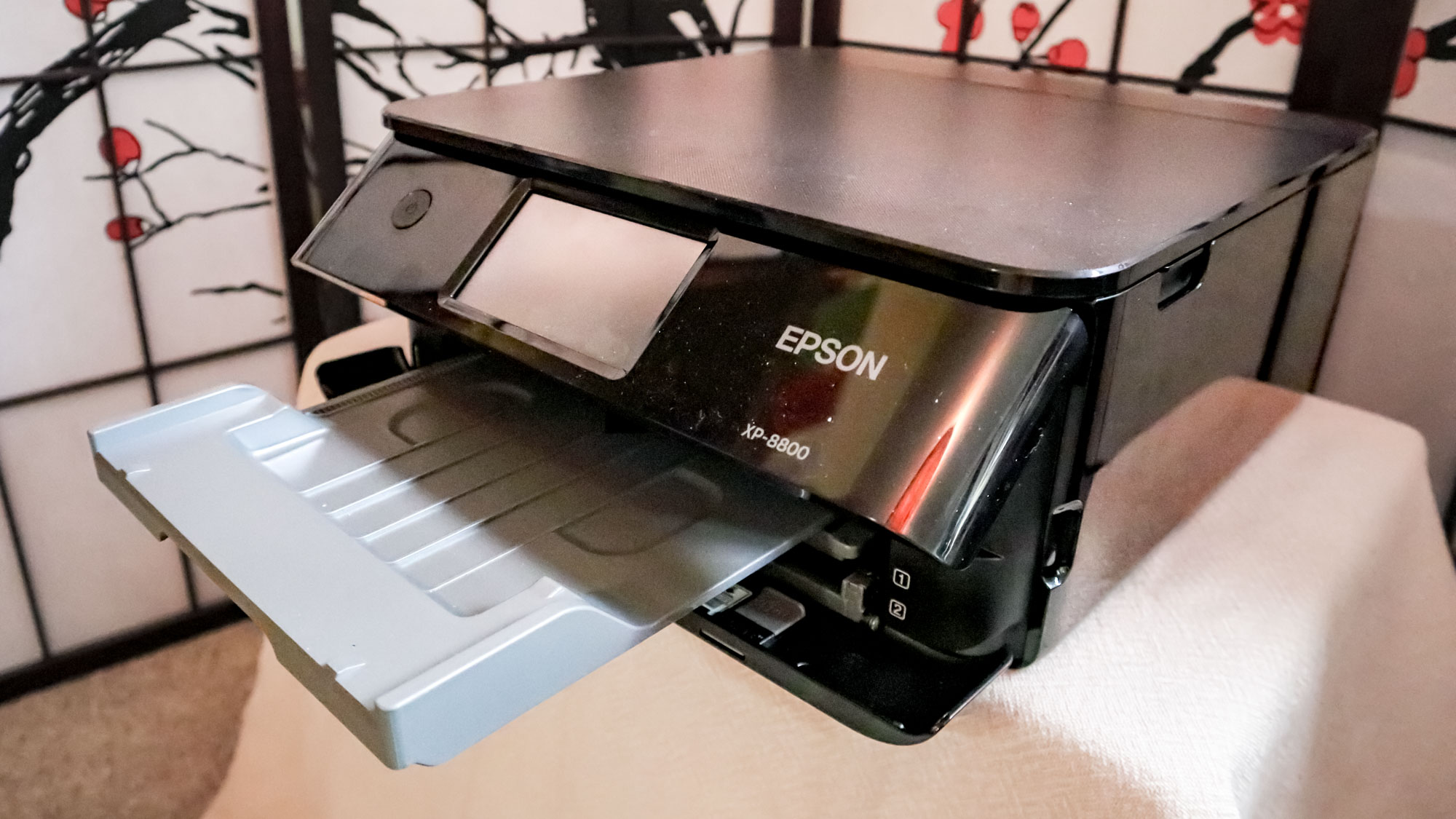
The Expression Photo XP-8800 uses six dye-based inks. The T340 series individual cartridge colors are black, cyan, magenta, yellow, light cyan and light magenta.
Individually, the black ink cartridge costs $11.99 and is rated to print 240 pages. The XL black cartridge ($19.99) is rated to print 500 pages. Costs per page are quite reasonable, at 5 cents and 4 cents, respectively, compared to the category averages of 8.1 cents and 6.2 cents, respectively.
Standard color cartridges cost $11.99 (rated to print 360 pages), while XL versions cost $22.99 each and are rated to last 830 pages. Costs per color page were roughly average. Total cost per color page is 21.6 cents with standard cartridges and 17.8 cents with XL cartridges. The category averages are 22 cents and 16.3 cents, respectively.
A three-pack of cyan, magenta and yellow cartridges costs $33.99, saving you almost two dollars compared to buying individual cartridges for a total of $35.97. A two-pack of light magenta and light cyan saves 99 cents off buying two separate cartridgs for $23.98. These are standard cartridges. Cost per color page, when purchasing both the CMY three-pack and the two-pack of light magenta and light cyan, is 19.8 cents—not as low as buying individual XL cartridges. Multi-packs of XL cartridges were not listed on the product webpage at time of review.
Setup & software
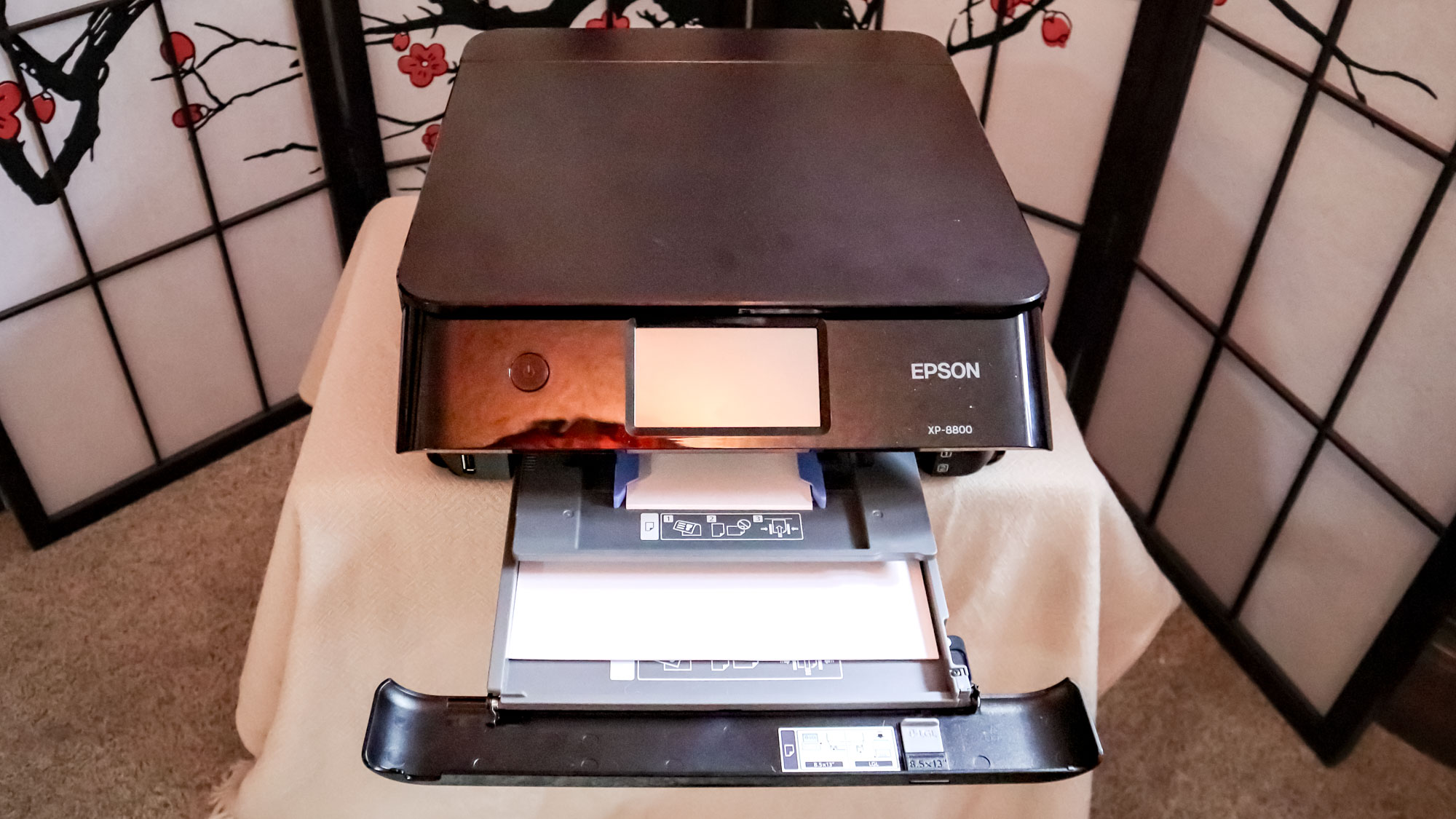
Although the product webpage says a CD setup disk is included in the box, my printer did not come with one. Following the printed instructions, I set up the XP-8800 using my iPhone. Setting up with a smart device was the recommended method. I used the iOS app, Epson Smart Panel. Afterward, for my Windows 10 PC I went to the online product page, as instructed by the setup script in the iOS Smart Panel app, and downloaded the driver or utility package.
Interestingly, the setup in the iOS app directed me to answer "later" when prompted to update the firmware, which I did. But then at the end of the setup I was prompted again to update the firmware, and did so. This process did not complete the first time, apparently due to an issue with the IP address.
Adding the printer to my network required typing in my router's password (WPS method was not offered). But along the way, the touch screen displayed messages saying there was a network connection issue. After this resolved, I added the XP-8800 for use with my Mac, which was as simple as adding it to my printers list.
The included Epson ScanSmart software worked well on my Windows PC. In photo scan mode, the software accurately detected multiple photographs and saved them as separate JPEG files. In document mode, however, the software did not offer an auto crop feature. As a result, magazine pages of unconventional sizes had to be scanned at letter-size, for example, which left white space at the edge on two sides.
You don't need to use a PC, however. You can use the mobile app to initiate a scan or copy from the flatbed. Also, you can take a picture of a document (called "document capture") and print the adjusted the photo. The quality isn't nearly as good as a flatbed scan when using my iPhone 7, but it's usable in a pinch.
Smart Panel for iOS offers basic photo edits such as auto correct, sharpness and brightness and contrast. Additional Creative print features such as printing on CD/DVD disks can be done with the Epson Creative Print app. The app offers card and stationary designs, collage prints, coloring book pages, stationary, and design paper.
The XP-8800 started up quickly, in about 7 seconds, when the touchscreen displays the main menu. After 16 seconds, calibration sounds stopped and the ring light around the power button changed from flashing to solid, indicating the photo printer was ready to go to work.
Bottom line

Very high image quality, fast performance, and photo-centric features are what distinguish the Expression Photo XP-8800—including CD/DVD printing, an SD Card slot, and a specialty media slot that can print sizes up to 8.5 x 47.2 inches.
The large touch screen works well for standalone operation, and ink costs for color pages are roughly average. Although text printing lags a bit, the XP-8800 is quick to print, scan and copy in color. If photography is your passion, and you're looking for a photo printer that also can adequately double as a general-purpose all-in-one, the Expression Photo XP-8800 is worth a serious look.
Eric Butterfield is a freelance writer and musician from California. His work has appeared in PC World magazine, CNET, Taproot, and Alter Action — plus Tom's Guide, of course — while his music has appeared in more than 260 TV show episodes for major networks such as NBC, Hulu, BBC America, and more. You can check out his work on Spotify.
You must confirm your public display name before commenting
Please logout and then login again, you will then be prompted to enter your display name.

